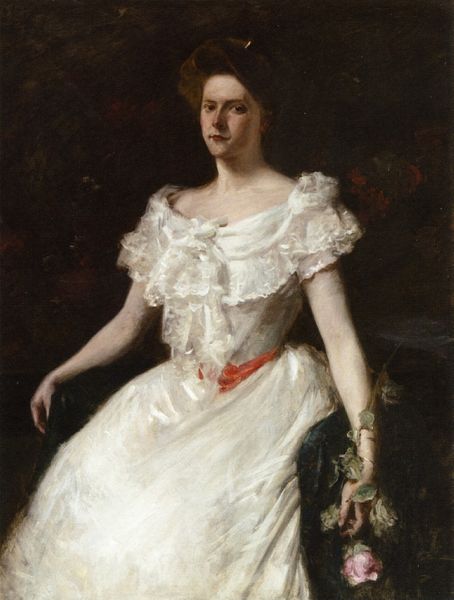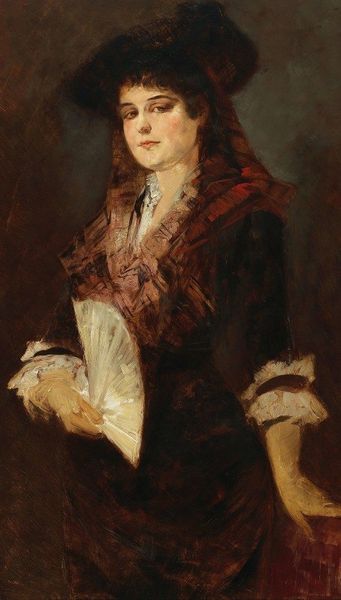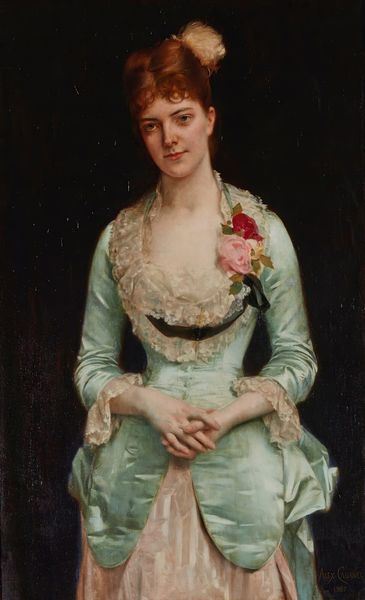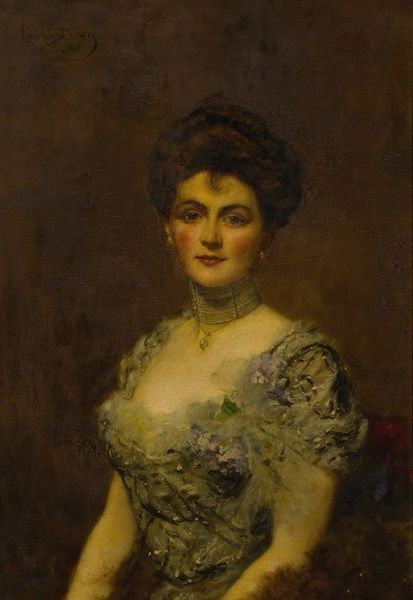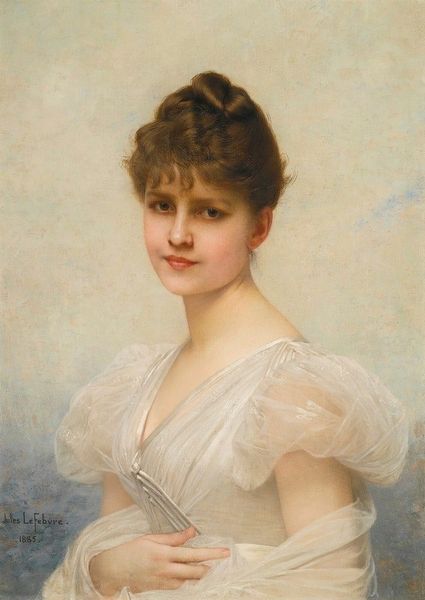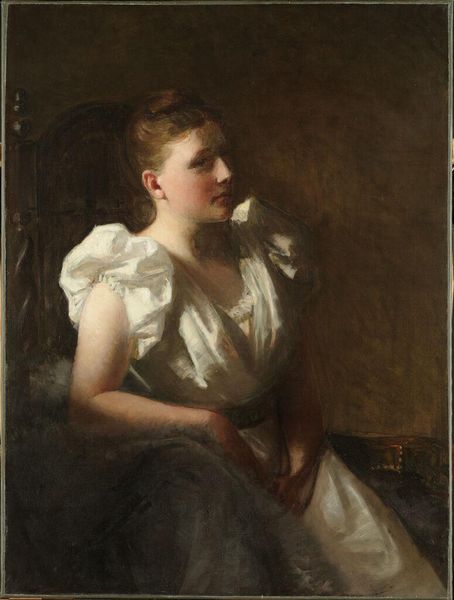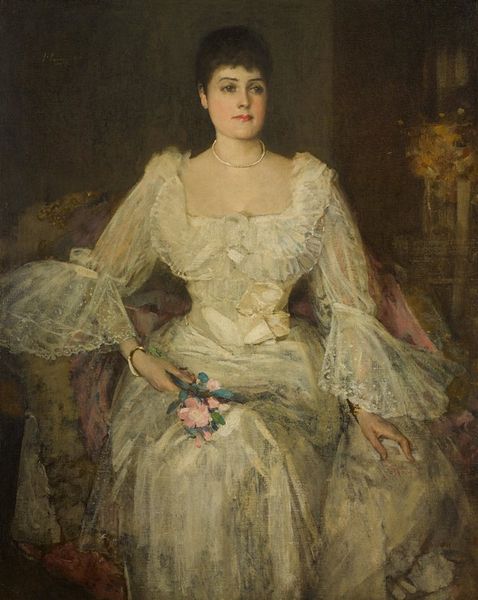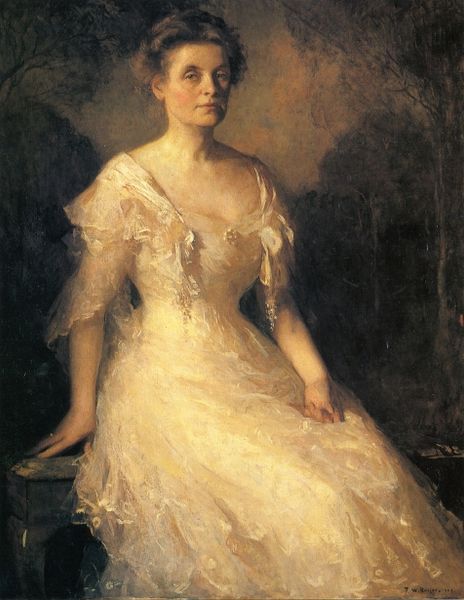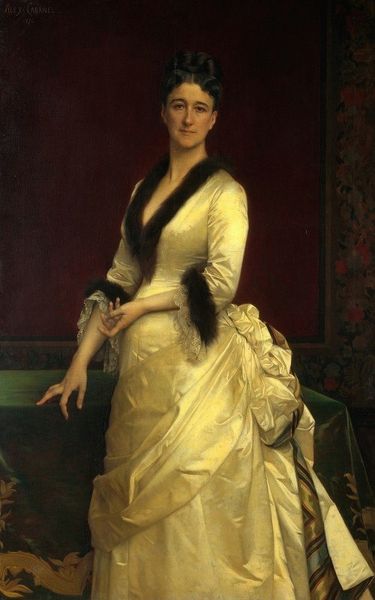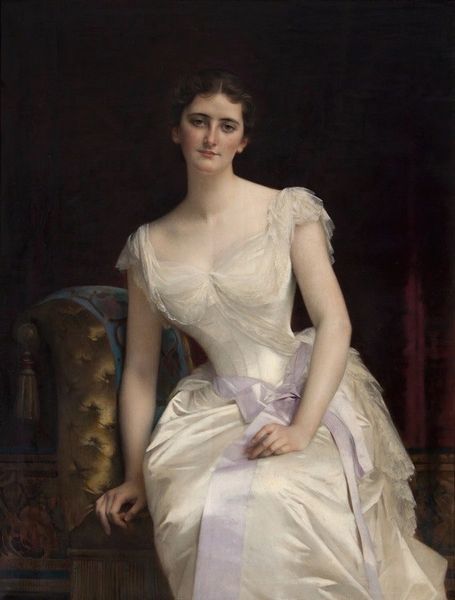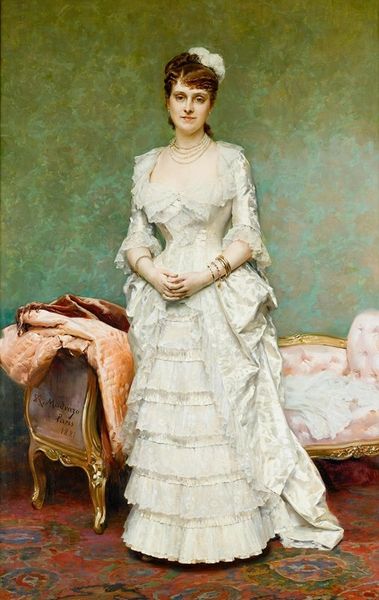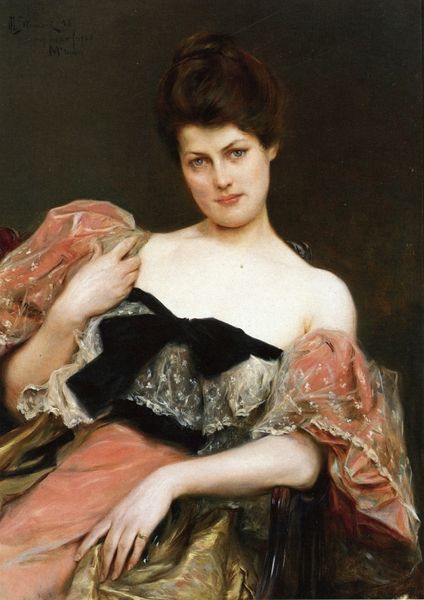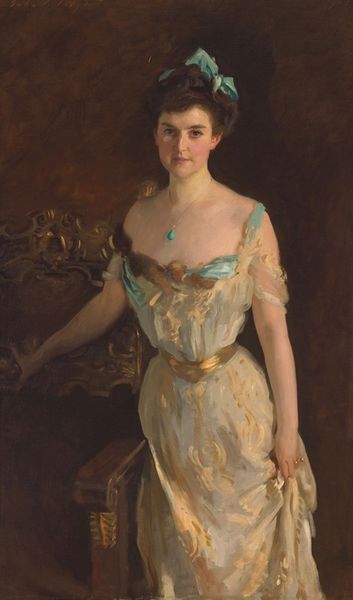
painting, impasto
#
portrait
#
figurative
#
character portrait
#
painting
#
figuration
#
impasto
#
romanticism
#
genre-painting
#
academic-art
#
modernism
#
realism
Copyright: Public Domain: Artvee
Curator: This is "At the Piano," a painting attributed to James Jebusa Shannon. Immediately striking, isn't it? Editor: It's very stately. She seems almost suspended, detached. The texture in her dress looks so rich; how was this effect achieved? Curator: The impasto technique is particularly evident here, lending a tangible quality to the fabric. Think about the social context too – the late 19th century, where wealth and status were meticulously displayed through fashion and possessions. Shannon clearly used costly pigments, reflecting the affluence of the sitter. Editor: And it goes beyond mere representation; consider how academic art was displayed, its role in defining social hierarchies. This piece screams "refinement," fitting the mold for portraits displayed in grand homes and institutions meant to reinforce a sense of established power. But the hint of modernism suggests it might challenge such notions. Curator: Precisely! Consider also how the choice of medium contributes to its impact. Oil paint allowed Shannon to build up layers, manipulate light, and capture minute details in the lace and flowers. The piano itself acts as more than just a prop; it is symbolic of a whole value system centered on education, cultivation, and leisure available only to the privileged few. Editor: But what kind of social impact would this painting have had back then? Was it simply consumed as a pretty picture of a wealthy woman, or did it play a deeper role in defining class distinctions, perhaps even causing unrest? Curator: That’s an intriguing point. It would certainly circulate among elite circles, further solidifying their self-image. However, displayed in a public gallery, its accessibility would become part of a broader conversation about privilege and visibility within a changing social landscape. Editor: Ultimately, the art lies in making paint, canvas, and social status harmonize in such an intriguing, layered piece. Curator: Indeed; Shannon offers us more than just a portrait – he hands us an insight into a world where materiality and representation danced to a tune dictated by the elites.
Comments
No comments
Be the first to comment and join the conversation on the ultimate creative platform.
